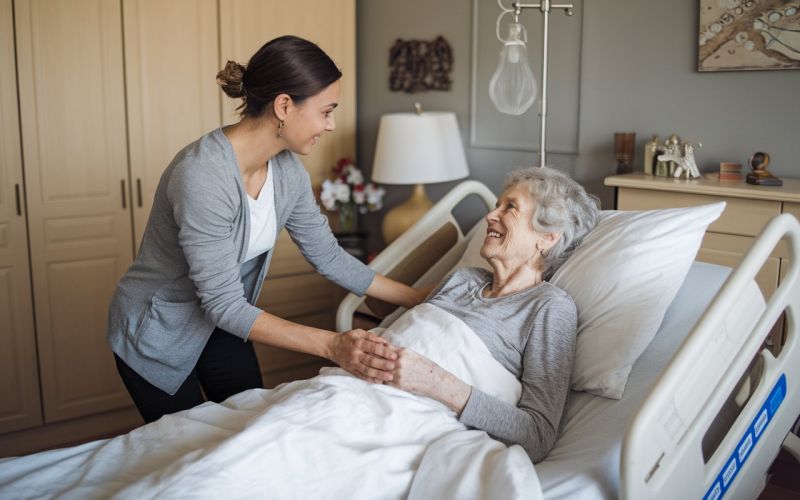Creating a Safe Home Environment for Alzheimer’s and Dementia Patients
iSavta | 23.02.2025

Caring for a loved one with Alzheimer’s or dementia requires thoughtful adjustments to ensure their safety and comfort at home. As cognitive abilities decline, individuals with these conditions may struggle with memory loss, confusion, and difficulty recognizing hazards. Creating a safe home environment can help prevent accidents and reduce anxiety for both the patient and the caregiver. Here are some essential tips to make a home safer for someone with Alzheimer’s or dementia.
1. Remove Tripping Hazards
-
Keep floors clear of clutter, electrical cords, and loose rugs.
-
Ensure all carpets and rugs are secured with non-slip backing.
-
Arrange furniture to create open walkways to prevent falls.
-
Install handrails on stairs and in hallways for additional support.
2. Improve Lighting
-
Ensure the home is well-lit, especially in hallways, staircases, and bathrooms.
-
Use nightlights in bedrooms, hallways, and bathrooms to guide movement at night.
-
Reduce glare by using soft lighting and adjusting window coverings.
3. Secure Dangerous Items
-
Lock up cleaning supplies, sharp objects, and medications.
-
Store firearms and other potentially dangerous items in a secure location.
-
Keep toxic plants or small objects that could be swallowed out of reach.
4. Prevent Wandering
-
Install secure locks on doors and windows, but ensure they are easy for caregivers to open.
-
Use motion sensors or door alarms to alert caregivers if the patient tries to leave.
-
Consider a GPS tracking device or ID bracelet in case they wander away from home.
5. Make the Bathroom Safe
-
Install grab bars near the toilet and in the shower or bathtub.
-
Use a non-slip mat in the shower and near the sink.
-
Adjust water heater settings to prevent scalding.
-
Consider a raised toilet seat for easier use.
6. Simplify the Living Space
-
Label doors, drawers, and rooms with clear signs or pictures to help with navigation.
-
Remove excess furniture and decorations that might cause confusion.
-
Use contrasting colors for walls, furniture, and flooring to enhance visibility.
7. Create a Calming Environment
-
Reduce loud noises and bright lights that may cause agitation.
-
Play soothing music or familiar sounds to provide comfort.
-
Establish a daily routine to help reduce confusion and anxiety.
8. Monitor Kitchen Safety
-
Use appliances with automatic shut-off features to prevent accidents.
-
Store knives and breakable items in locked cabinets.
-
Consider disabling the stove or installing safety knobs.
-
Keep frequently used items within easy reach to avoid unnecessary movement.
9. Encourage Safe Mobility
-
Ensure chairs and beds are at an appropriate height for easy sitting and standing.
-
Provide comfortable, supportive footwear to prevent slipping.
-
Place a sturdy chair in frequently used areas for resting.
10. Stay Prepared for Emergencies
-
Keep a list of emergency contacts in a visible location.
-
Install smoke detectors and check them regularly.
-
Have a fire extinguisher easily accessible in the home.
-
Plan an emergency evacuation route and practice it if necessary.
Conclusion
Creating a safe home environment for a loved one with Alzheimer’s or dementia requires attention to both physical safety and emotional well-being. By making thoughtful modifications, caregivers can reduce risks, enhance comfort, and provide a more secure and supportive space for their loved one. Small changes can make a big difference in ensuring they feel safe and cared for in their own home.











